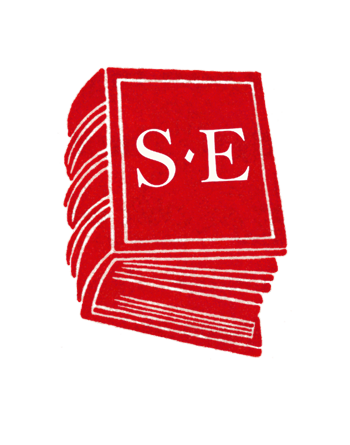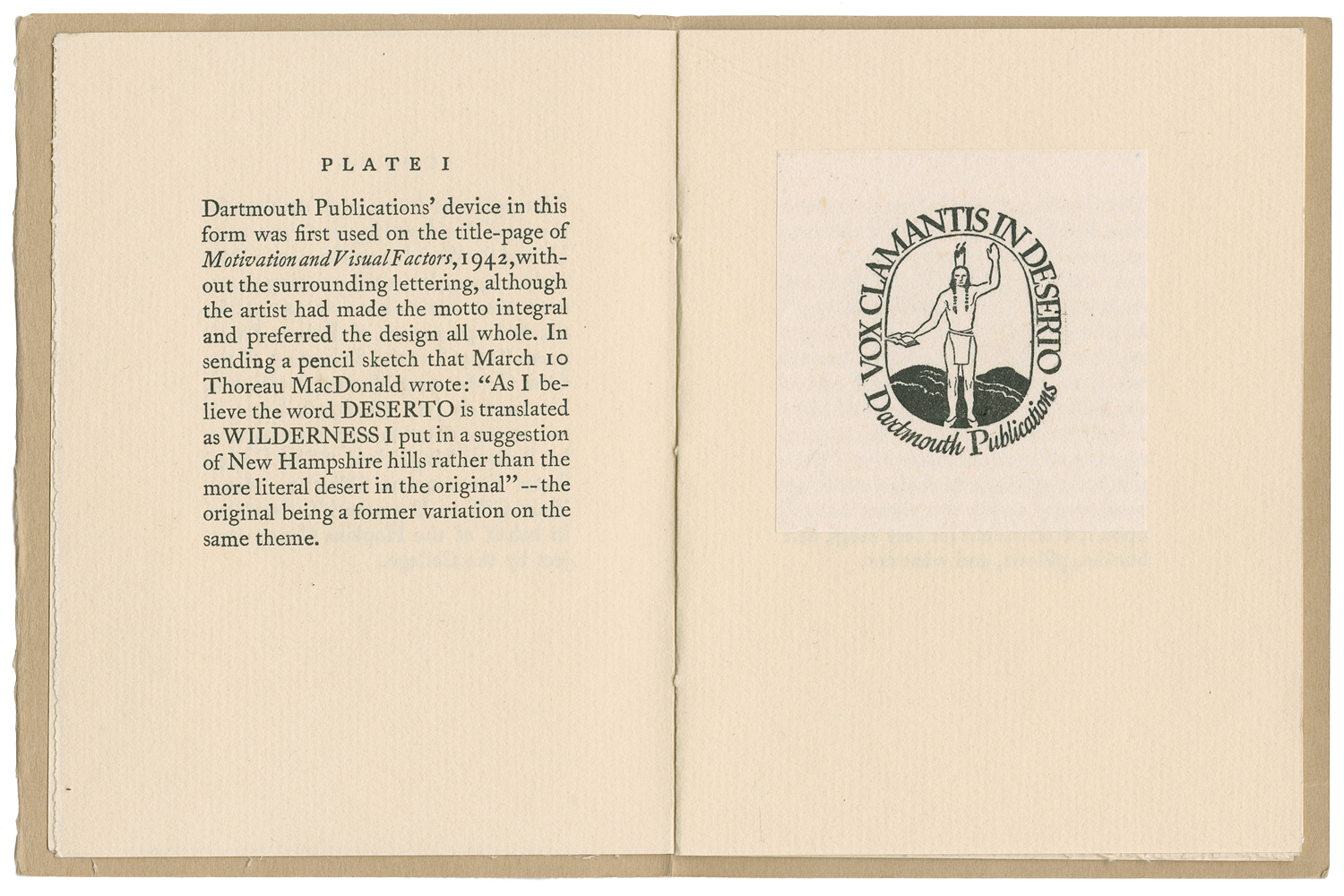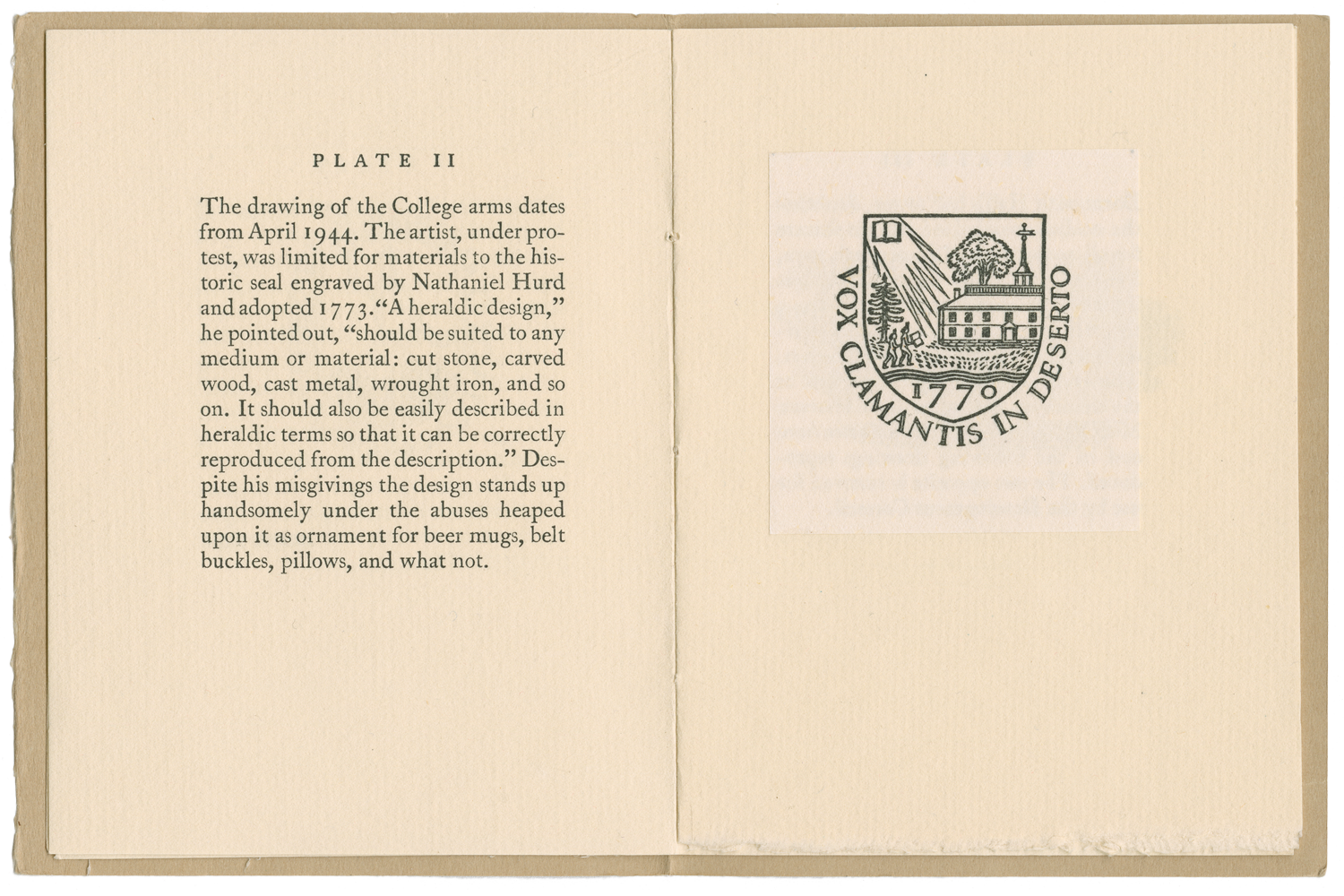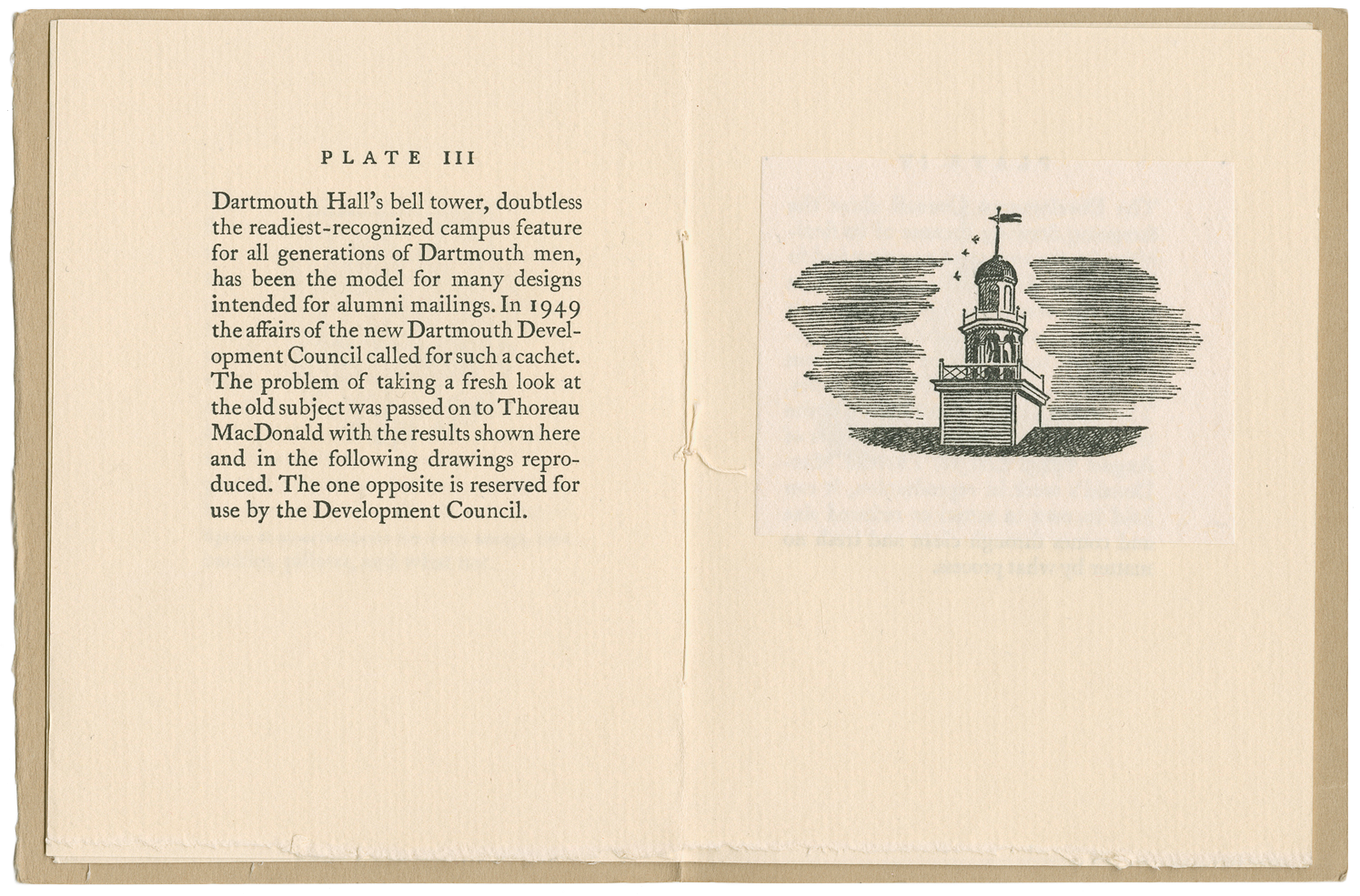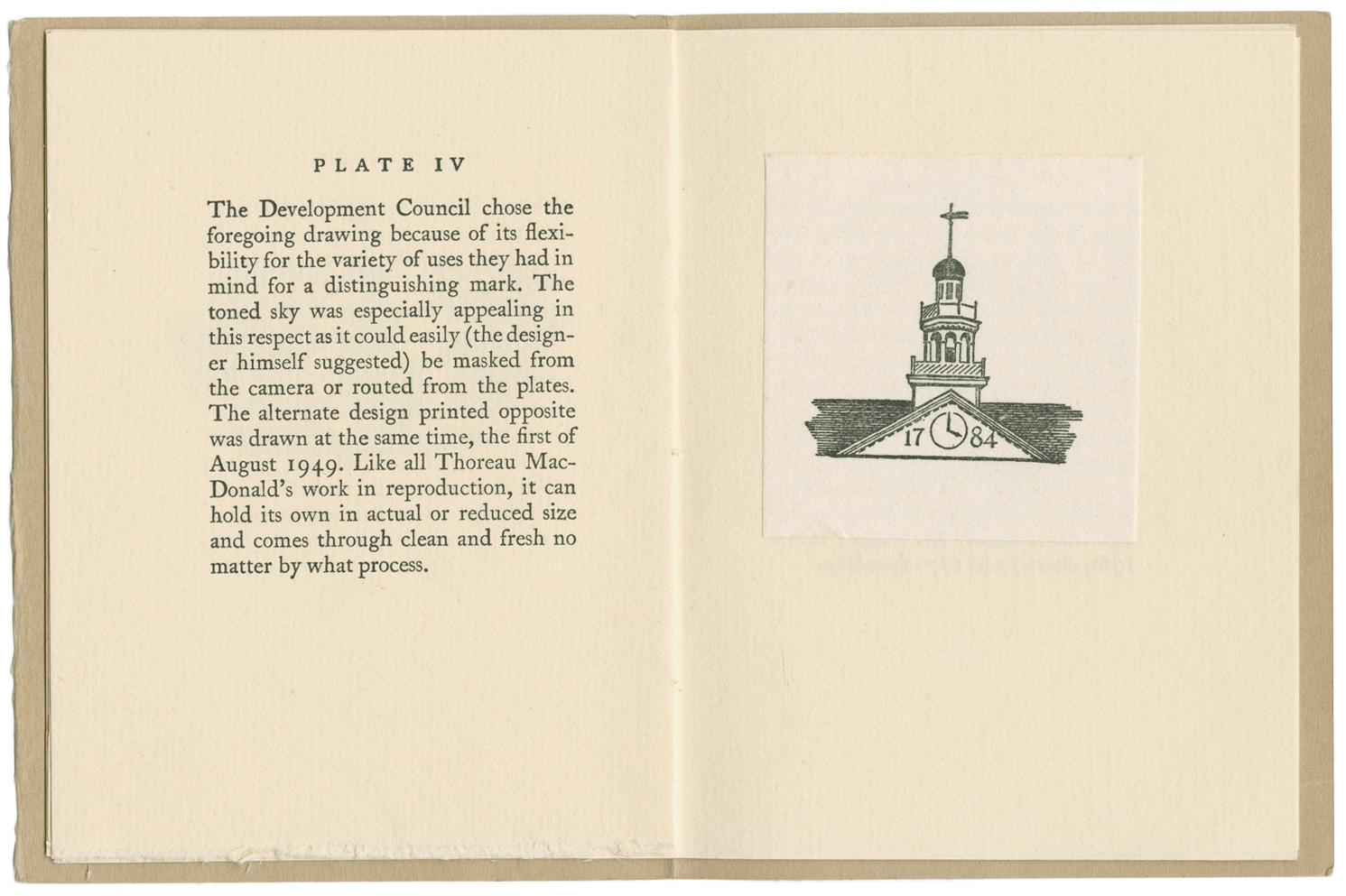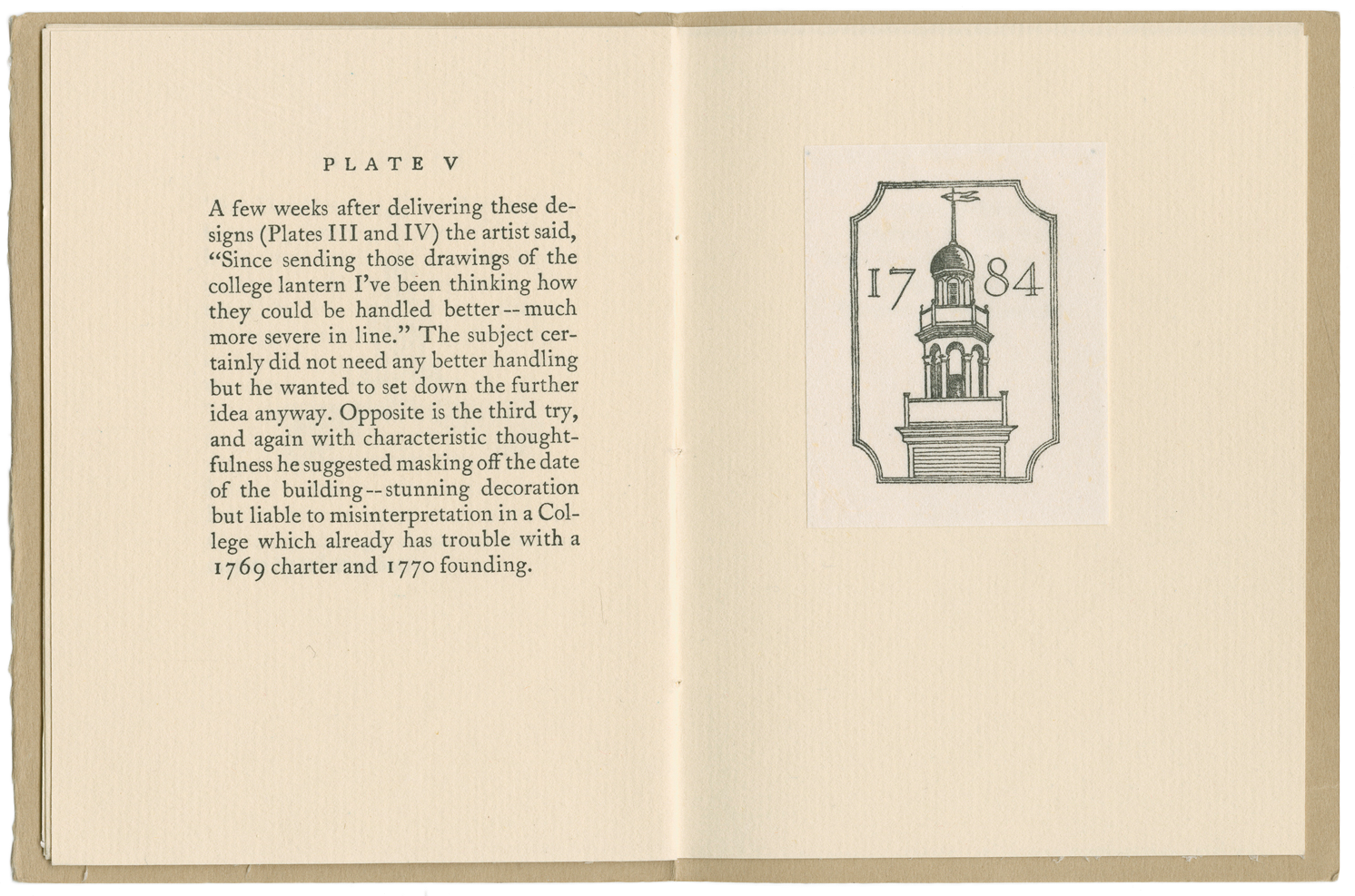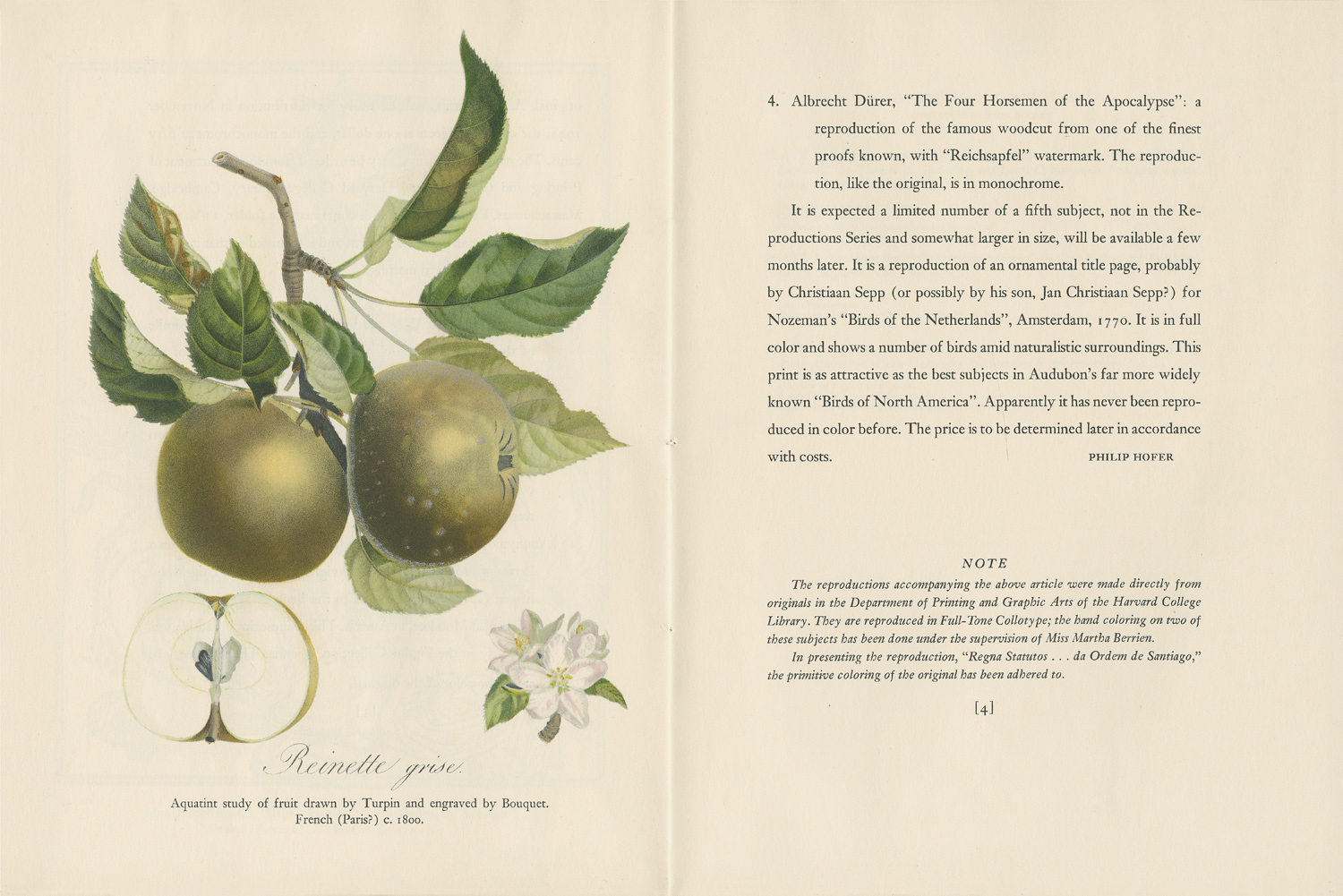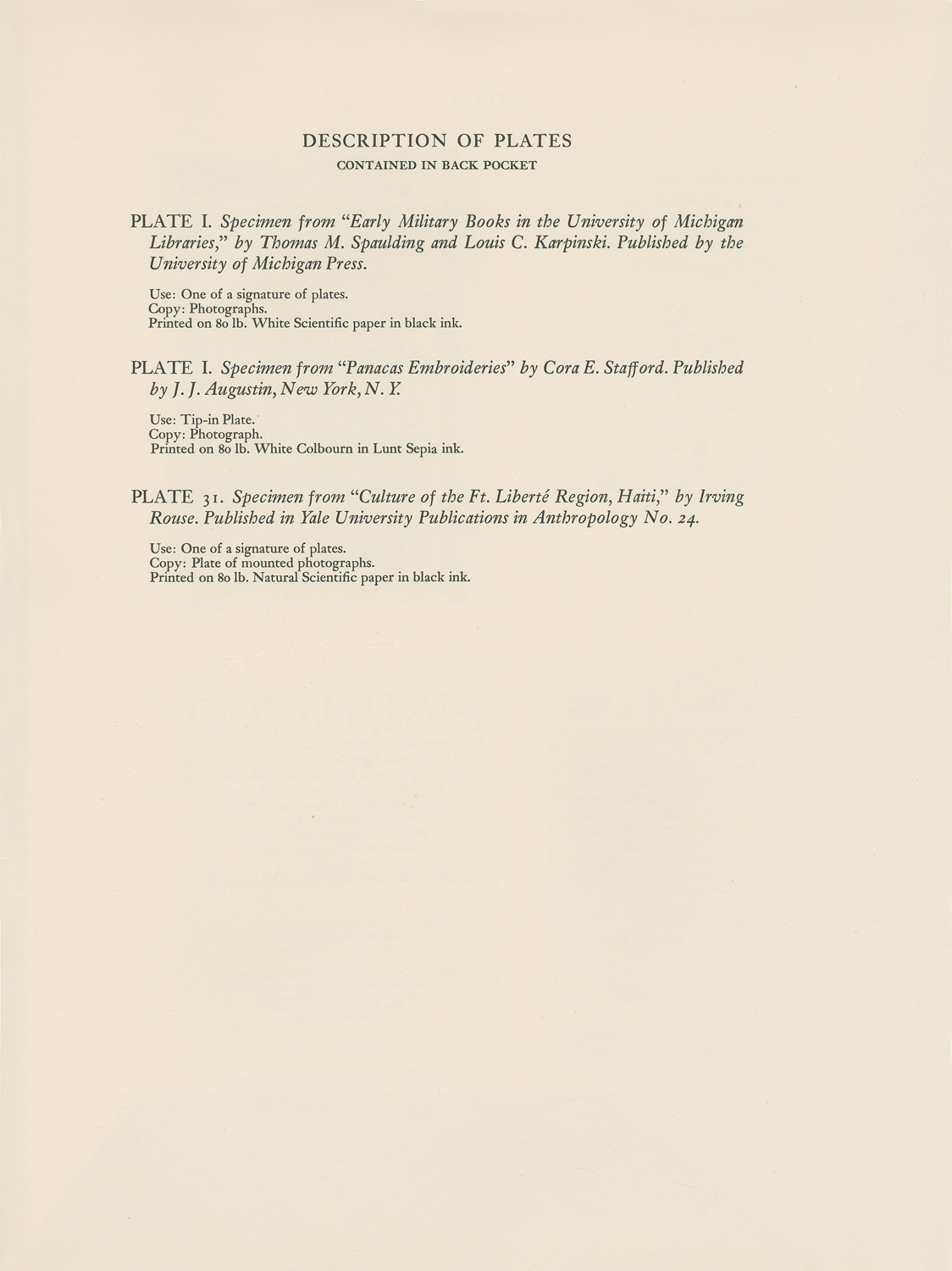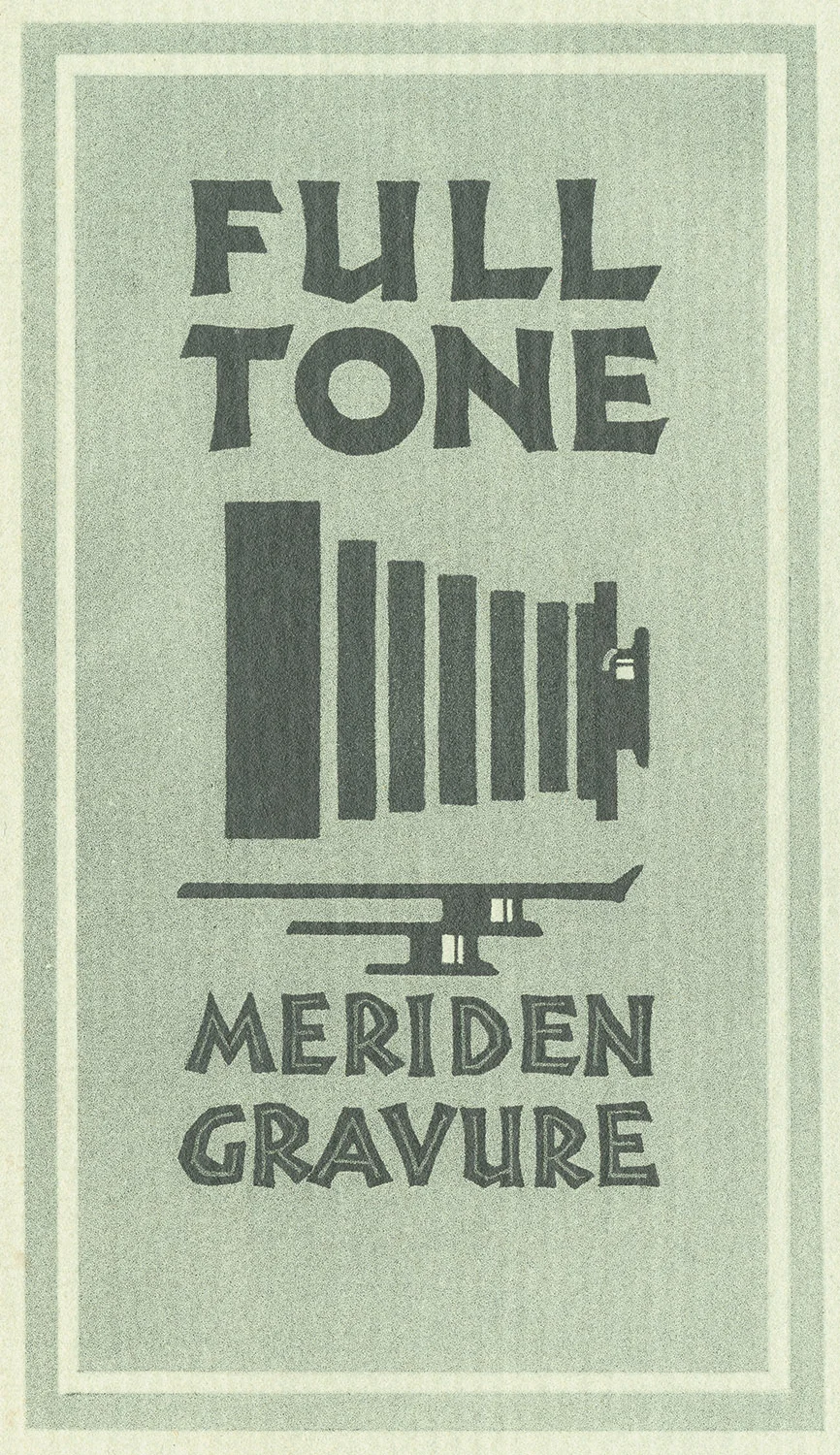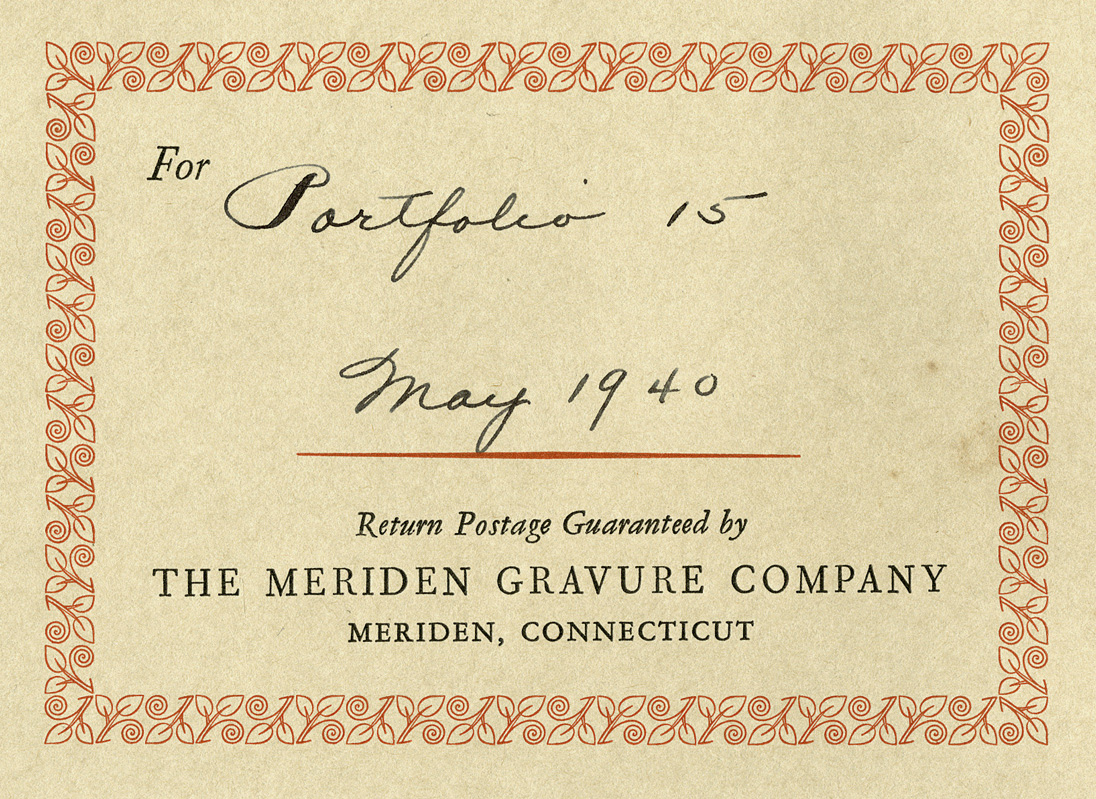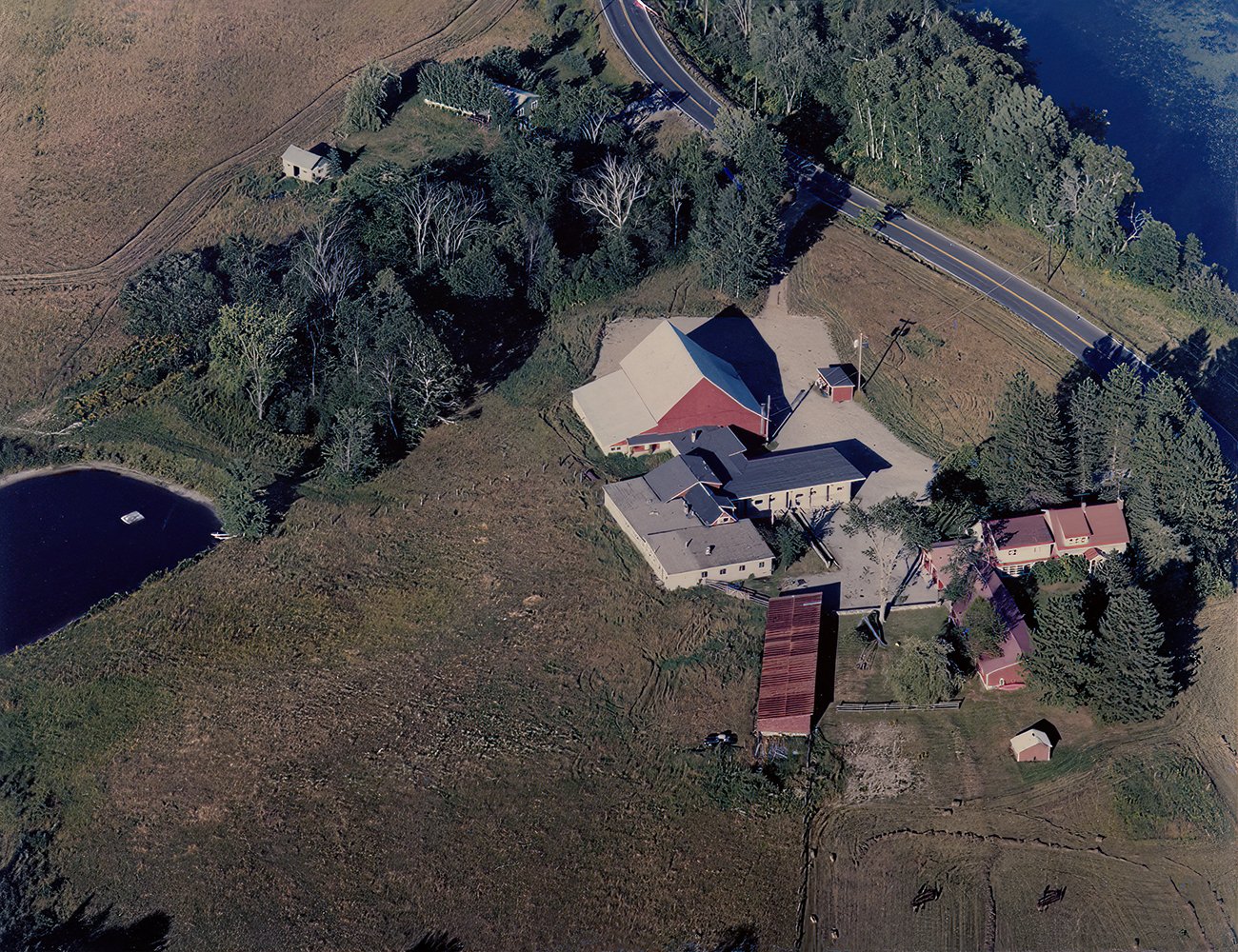The Stinehour Press
A Bibliographical Checklist of the First Thirty Years
Selected and Compiled by David Farrell
Published by Meriden-Stinehour Press, Lunenburg, Vermont, 1988
No. 1
Thoreau MacDonald's Drawings for Dartmouth
With notes by Ray Nash
Designed and printed by Roderick D. Stinehour at the Graphic Arts Workshop,
Dartmouth College, May 1950
4.75 x 3.5 inches; sixteen pages including five tipped-in illustrations on Japanese tissue. Two hundred copies; untrimmed and handsewn by Elizabeth Stinehour into a light brown paper cover.
This is the first entry inThe Stinehour Press, A Bibliographical Checklist of the First Thirty Years, which describes 1,006 publications printed at The Stinehour Press from 1950 to 1979.
No. 47
The Stuyvesant Staircase, Ayrault House, Newport. Privately printed, 1956.
8 3/4 x 6 1/4 inches; 12 + [2] pages, illustrated with a collotype plate printed by the Meriden Gravure Company. 150 copies printed on untrimmed paper; handsewn into brown paper cover. Designed by Roderick Stinehour. The pattern paper used to wrap the cover was designed by Elizabeth Friedländer (1903 - 1984), who designed a number of patterned papers for the Cuwren Press in the late 1940’s.
No. 53
The Great Stone Face by Nathaniel Hawthorne
Foreward by Stearns Morse, drawings by John Nash. Printed and published by The Stinehour Press in 1957.
Designed by Roderick Stinehour, forty-six pages, 5.375 x 7.5 inches.
Available for purchase from the Shop
No. 80
A few Paragraphs on Printing inVermont... By Roland E. Robinson. Lunenburg, Vermont
The Stinehour Press, Christmas, 1958
Excerpt from Vermont: A Study of Independence (1897)
6 1/2 x 3 3/4 inches; 8 pages. 200 copies printed for friends of the Press; handsewn into printed blue paper cover.
An early Christmas keepsake from the Stinehour Press. Envelope addressed by Rocky Stinehour.
No. 205
Grand
By Tennessee Williams. New York, New York, House of Books, Ltd., 1964
First Edition. 7 3/4 x 5 1/4 inches; 34 pages. 300 copies signed by the author; bound in yellow cloth over boards.
No. 251
Jan Van Krimpen: A Perspective on Type and Typography, by John Dreyfus.
Printed for Gallery 303, New York, 1965
9 1/4 x 6 1/2 inches; 20 pages. 300 copies saddle wire stitched into white paper cover. First appeared in Printing and Graphic Arts, VII, 4 (1959); here printed for the Heritage of the Graphic Arts lecture series. Designed by Roderick Stinehour.
No. 320
The Country Mouse and the Town Mouse
Illustrated by Wenday Watson. Printed by The Stinehour Press in 1967 as a Christmas keepsake.
Designed by Edith McKeon, thirty-two pages, 4 x 6 inches.
No. 375
Philip Hofer as Author and Publisher
Introduction by Ray Nash. Cambridge, Massachusetts, Harvard College Library
Department of Printing and Graphic Arts, 1968
10 1/4 x 7 1/4 inches; 64+ [2] pages; illustrated; bibliography. 500 copies bound in printed gray paper and red quarter cloth over boards. Designed by Roderick Stinehour.
No. 570
The Visions of Mary
Edward Tyler with wood engravings by Gillian Tyler.
9 1/4 x 7 inches; 26 pages. 350 copies bound in beige paper over boards. Designed by Roderick Stinehour.
Lunenburg, Vermont; Privately printed, 1972.
